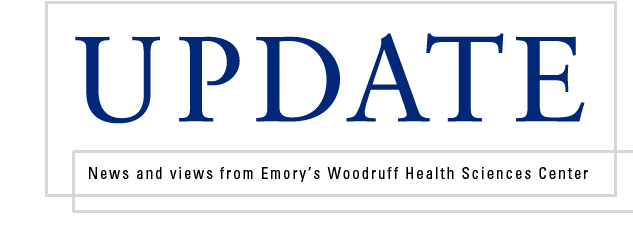Woodruff gave $230 million to Emory during his lifetime
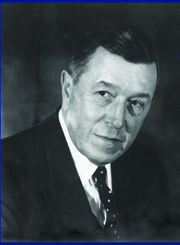 |
|
| Robert W. Woodruff |
|
For the Woodruff Health Sciences Center (WHSC), December presents a special opportunity to reflect back on gifts from the past—and to express gratitude for the lasting legacy they have made possible.
This December 6 would have been the 122nd birthday of WHSC benefactor and visionary philanthropist Robert W. Woodruff, former president and chairman of the Coca-Cola Company. For nearly 50 years, Mr. Woodruff's commitment to transforming health and healing was evident in his ongoing generosity in support of building a premier education, research, and patient care center here at Emory. Throughout his long life, he gave nearly $350 million to charity, including $230 million to Emory, much of which enabled the establishment and growth of the Woodruff Health Sciences Center.
An initial gift of $50,000—an almost inconceivable amount of money in Depression-era 1937—to establish a cancer clinic on the Emory campus (now known as the Winship Cancer Institute) began Mr. Woodruff's half century of service to the institution. Recognizing the value of education and research, he and his brother George gave a gift in 1979 of $105 million to Emory—the largest philanthropic gift on record at the time to any institution of higher education in the nation.
More than a decade after Mr. Woodruff's death at Emory University Hospital in 1985, his family foundation donated an additional gift of Coca-Cola shares to establish the Robert W. Woodruff Health Sciences Center Fund. This gift, now worth approximately $800 million, funds research, education, and patient care efforts that distinguish WHSC among its peers nationwide.
Mr. Woodruff's generosity and vision continue to have a tremendous impact not only on WHSC, but on the many thousands of people who benefit from its lifesaving and life-affirming work each year. And yet the man often referred to as "Mr. Anonymous" never expected accolades for his generosity and vision.
"Mr. Woodruff was the kind of man who worked diligently behind the scenes to make a difference without drawing attention to himself or demanding credit," says EVPHA Wright Caughman. "In fact, he often said, ‘There is no limit to what a man can do or where he can go if he doesn't mind who gets the credit.' Every day, I see his legacy of selfless service to the greater good reflected in the extraordinary work of our WHSC faculty and staff."
Emory leads national initiative in palliative care
Emory's Palliative Care Center is leading a new national initiative, IPAL-EM (Improving Palliative Care in Emergency Medicine), which is designed to integrate and increase the use of palliative care when seriously ill patients are admitted to the emergency department.
| |
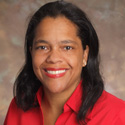 |
| |
Tammie Quest |
According to Tammie Quest, an emergency medicine physician who will direct the new project, IPAL-EM is designed to provide a central venue for sharing expertise, evidence, tools, and resources essential to integrating and improving palliative care in intensive care and emergency medicine. Quest also directs Emory's Palliative Care Center.
Despite growing recognition of the role of palliative care in emergency medicine, integration of the two can sometimes seem like a clash of cultures and mindset. Supported by the Center to Advance Palliative Care and the Olive Branch Foundation, IPAL-EM will focus on areas of common ground.
"Emory is a leader in both areas," says Quest. "With more than a decade of inquiry, we have faculty leading initiatives that will link with others to change the landscape of palliative care in emergency medicine."
Palliative care is specialized medical care focused on relief from the symptoms, pain, and stress from serious illness, whatever the diagnosis. It is appropriate at any age and at any stage in an illness and can be provided along with curative treatment. The goal is to improve quality of life for both the patient and family.
"The emergency department is an underappreciated but key site for patients and families to receive palliative care," says Quest. "Seriously ill patients often experience pain and other symptoms that require immediate evaluation, excellent communication, and 24/7 treatment."
Emergency teams manage critical initial evaluations, initiate pain and symptom treatment, shepherd communication, and ensure transitions to other care settings. Integration of palliative care is expected to improve control of symptoms and reduce anxiety, depression, and post‐traumatic stress disorder for both patients and their families. Care plans are expected to become more realistic, appropriate, and consistent with patients' preferences. Conflicts about use of life‐sustaining treatments should be reduced, and patients are expected to experience earlier transitions to appropriate settings.
Extending the reach of palliative care is also expected to reduce use of non‐beneficial treatments, hospital length of stay, and hospital readmissions as well as improve patient safety and satisfaction. Read more about palliative care at Emory.
Exploring cell therapy for diabetes complications
| |
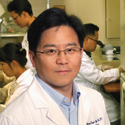 |
| |
Young-sup Yoon |
| |
|
| |
 |
| |
Xiaodong Cheng |
| |
|
An Emory-led research team has received $6.1 million from the National Institute of Diabetes and Digestive and Kidney Diseases to explore cell therapy for two of the most common and debilitating complications of diabetes, peripheral arterial disease (PAD) and diabetic neuropathy.
Young-Sup Yoon (director of stem cell biology, cardiology) and Xiaodong Cheng (biochemistry professor and Georgia Research Alliance Eminent Scholar) are co-principal investigators of the study, which also includes investigators at Georgia Tech, University of Alabama, and UC-San Diego.
Growing evidence has shown that cells taken from a patient's own bone marrow, called bone marrow-derived endothelial progenitor cells (EPCs), can be effective in treating diabetic neuropathy by repairing blood vessels. Thus far, however, EPCs derived from diabetic patients have been only modestly effective.
The Emory research team believes that epigenetic changes in the EPCs of diabetic patients may be at fault, specifically epigenetic alterations in the EPC's chromatin (packaging mechanism for DNA in the nucleus of cells).
"We plan to investigate epigenetic chromatin changes in diabetic EPCs and to reprogram or re-engineer these EPCs with small- molecule epigenetic regulators and biomaterial to enhance or restore their function," Yoon explains. "Other research has shown the ability of small molecules to induce chromatin remodeling and alter gene expression, and we believe this is a promising approach."
The research team will use animal models to test the therapeutic effects of the reprogrammed cells for PAD and diabetic neuropathy. The next step will be a pilot clinical trial in human patients. Read more.
Next-generation intensive care
Since the arrival of Tim Buchman in 2009 as the founding director of Emory's Center for Critical Care, a number of initiatives have been undertaken to help streamline and integrate critical care within Emory Healthcare. On 11-South at Emory University Hospital Midtown (EUH Midtown), for example, Buchman's team is building a next-generation ICU that will become the standard design for all Emory Healthcare ICUs. Patient rooms each will be 313 sq. ft., a size that is 83% bigger than current ICU rooms. Each room will have space for family members, including a computer desk.
| |
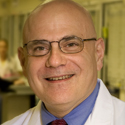 |
| |
Tim Buchman |
| |
|
In the new design, nursing workstations will be located between every two patient rooms with wide windows (above, yellow half-hexagons) into the rooms. Each room will have a camera to send images to a team theater, where health care providers will develop a plan to ensure that each patient gets complete and consistent care. The team theater will have eight large screens, much like an air traffic control center, which will facilitate rapid identification of patient needs.
The new ICU also will feature quiet care. "Go into the average ICU today and the first thing you are assaulted by is noise," says Buchman. "Of course it is important to receive and respond to alerts. But why generate the alerts next to the patient? Let's send them directly to the caregiver." The monitoring instruments will send alerts to the workstations or to a "voice badge" that nurses can wear on their lanyards to help them monitor patients as they move about the unit.
These ideas will be incorporated in Emory University Hospital's new bed tower—more than half of the 210 beds there will be for critical care—and EUH Midtown's new 12-bed cardiothoracic ICU. At Midtown, a bridge will be built to connect the OR and the ICU so postoperative patients can travel from one to the other without having to enter an elevator.
In addition to design, Buchman is focusing on other initiatives to standardize care in the ICU. One of his first goals at Emory was to make sure that every ICU is staffed 24/7 with a nurse practitioner or physician assistant specializing in critical care. In addition, every unit now has a medical director.
Because his branch of medicine can be the most resource-intensive of all inpatient care, Buchman currently is developing an overall operational plan that details the processes that must take place when a critically ill or injured patient is admitted to an Emory Healthcare ICU.
Clinicians in Emory's ICUs come from such diverse professional backgrounds as pulmonary medicine and surgical intensive care so he is underwriting interdisciplinary training sessions to improve communication and encourage team building. At one recent session, the team had to work through a hypothetical scenario that included rescuing medical professionals held hostage by foreign rebels. The participants had to develop a plan to get the hostages out of danger and home safely—much as they have to do with many of their patients.
Redesigning critical care now is of particular importance since Atlanta's population is graying. "We're on the cusp of not having enough critical care physicians," says Buchman. In metro Atlanta, the population of people 65 and older will increase by 38% between 2010 and 2015. As a result, demand for these physicians will outstrip supply by as early as next year.—Article adapted from the medical Dean's Letter.
Emory Healthcare partners with MinuteClinic in local CVS stores
Emory Healthcare has entered into a clinical affiliation with MinuteClinic, the retail health care division of CVS Caremark, to enhance access to high-quality, affordable care throughout the metro area. Care at retail walk-in clinics typically costs less than similar quality care at a doctor's office or urgent care center and is much less expensive than a trip to a hospital emergency department.
MinuteClinic has walk-in medical clinics open seven days a week inside 31 CVS/pharmacy stores in Atlanta. The clinics are staffed by nurse practitioners, who provide treatment for common illnesses and administer wellness and prevention services, including health condition monitoring. The new affiliation means that these nurse practitioners can now turn to Emory physicians for help with diagnosis and treatment.
Under the agreement, Emory physicians will serve as medical directors for these MinuteClinic locations. In addition, MinuteClinic and Emory Healthcare will collaborate on patient education and disease management initiatives and will inform patients of the services each offers. Emory Healthcare will accept patients who need a level of care that is not provided at MinuteClinic. Signage at MinuteClinic locations will inform patients that each site has a clinical affiliation with Emory Healthcare.
"We share a common goal with Emory Healthcare to make medical care more accessible and convenient in the Atlanta metro area, where we opened our first Georgia clinic in 2007 and continue to grow, with six new clinics in 2011, says Andrew Sussman, president of MinuteClinic and senior VP/associate chief medical officer for CVS Caremark. "As we have experienced with 11 other health system affiliations around the country, this relationship with Emory will enhance our ability to bring high-quality care to patients in MinuteClinic locations in 13 Georgia counties."
"Emory Healthcare is expanding our presence to ensure we can offer patients in the community ready access to outstanding care," says EHC CEO John Fox. "As a well-established part of the community, we are well positioned to offer care models that will help extend our services to even more neighborhoods."
MinuteClinic and Emory Healthcare plan to integrate their electronic medical record systems to streamline communication around all aspects of each patient's care. With patient permission, MinuteClinic will electronically share medical histories and visit summaries with other Emory Healthcare locations in Georgia. In the meantime, MinuteClinic will continue its standard practice of sending patient visit summaries to primary care providers via fax or mail, typically within 24 hours.
MinuteClinic practitioners specialize in family health care and can diagnose, treat, and write prescriptions for common illnesses such as strep throat and ear, eye, sinus, bladder, and bronchial infections. Minor wounds, abrasions, and joint sprains are treated, and common vaccinations such as influenza, tetanus, pneumonia, pertussis, and hepatitis A & B are available at most locations. Walk-in camp, sports, and college physicals for adolescents are available daily. In addition, MinuteClinic administers a series of wellness services designed to help consumers identify lifestyle changes needed to improve their current and future health, including screenings and monitoring for diabetes, high blood pressure, and high cholesterol.
No appointments are required at these walk-in clinics, and most health insurance is accepted. Clinics in the Atlanta area are open Mon.-Fri., 8:30 a.m. to 7:30 p.m.; Sat., 9 a.m. to 5:30 p.m.; and Sun., 10 a.m. to 5:30 p.m.
Helping researchers avoid conflict of interest
| |
 |
| |
Brenda Seiton |
One in a series of profiles of people in the Woodruff Health Sciences Center
As assistant VP for research administration, Brenda Seiton's main responsibility is to help Emory researchers understand and manage financial relationships that could be a conflict of interest (COI).
Compliance sounds straightforward enough: don't let financial interests or personal considerations bias your scientific or clinical judgment, objectivity, or trustworthiness. However, documenting and demonstrating compliance for the public, the government, and funding agencies can be difficult. COI reporting became even more complex with announcement of tighter NIH regulations to be implemented in 2012. Fortunately, changes set in place in the three years since Emory created Seiton's office have put the university ahead of the curve.
Biostats
• Asst VP, Research Administration, Emory
Assoc Dean, Admin, Emory School of Medicine
• Succession of roles at Magellan Health Services (formerly Charter Medical Corporation): Dir, Risk Mgt; asst div counsel advising hospital administrators on Medicare fraud and intellectual property; legal intern (employment issues and federal securities laws, including insider training, securities fraud)
• JD, Dickinson School of Law, Penn State Univ
• BS (gen mgt) and BA (philosophy), Boston College |
|
The first of those changes was revision of existing Emory research policies, then more than a decade old. The second was implementation of a new COI electronic reporting system (eCOI), developed by Emory staff led by Seiton and Marc Overcash in information technology. eCOI helps track which relationships need to be reported as well as when and where to report them (for example, financial interests with health-related companies, consulting fees, or ownership or investment in a device or drug being studied). Significant changes currently are being made to eCOI to meet the new NIH regulations.
The system is designed to make all required reporting easier, more intuitive, and more fail-safe, making it virtually impossible, for example, to report data in three places and forget the fourth. The system links reports required for review by government agencies and by various Emory administrators, including those in Emory Healthcare and in dean's and department chair offices, both of which have to approve outside consulting activities and other types of financial ties that could present COI issues for researchers.
Much of Seiton's time currently is spent strategizing how to implement policies and procedures that both comply with the new regulations and conserve investigators' time and energy. When she or a staff member receives information about a possible conflict, they work with the researcher and the COI Review Committee. This committee, led by Tris Parslow (chair of pathology) and Bob Taylor (cardiology), is made up of faculty (from the college and schools of public health and medicine) and a community member. This group helps Seiton and the researcher develop a management plan in which the researcher may be required to reduce his or her financial interests or eliminate a relationship entirely.
Seiton, a lawyer by training, first joined Emory in 1997, working in a new position in the medical school in which she spent the majority of her time on COI issues. New federal COI guidelines had just been implemented the previous year.
As research continued to grow across the university, leaders decided to bolster the review process across the board at Emory, and in 2008, Seiton was tapped to head a new university office, reporting to David Wynes, VP for research administration. Jeff Steltzer, another attorney, moved with Seiton from the medical school's COI program, before he left for a similar position at Georgia Tech (he and Seiton still work closely). Karly Taylor, who previously worked on COI at Partners Healthcare, joined the group as a senior COI specialist in 2009. Joi Mindingall, an attorney who previously managed the COI office at Vanderbilt, came on board as a senior COI specialist in 2011. Seiton's other staff member is Carrie Przybilla, COI specialist.
|
|
 |
|
From the Executive VP
 |
| Wright Caughman |
Watch the video above, or read the transcript below.
Woodruff legacy lives on
Hello and happy holidays.
As we enter the season of celebration, we also celebrate the 122nd birthday of our namesake and greatest benefactor, Mr. Robert W. Woodruff.
Mr. Woodruff was a man of unique vision, and he had a passion for building Atlanta into a world-class city. He knew that education, research, and health care were crucial in order for the city and its citizens to not just survive, but thrive.
That's why he gave so generously over so many years to Emory. His long-term support allowed Emory to create the Woodruff Health Sciences Center, and I know that he would be proud of the impact of our work on the community over the past year.
As you well know, 2011 has been another challenging year. Unemployment in Georgia hovers around 10%, and the ranks of the uninsured continue to grow. For many people already struggling with financial hardship, their challenges were compounded by health problems they and their families simply couldn't afford.
That's where the Woodruff Health Sciences Center came in. Our extraordinary team stood ready to offer service, compassion, and care to all who turned to us for help. In 2011, we provided more than $68 million in charity care to people in need. Regardless of their ability to pay, thousands of Georgia's uninsured children, seniors, veterans, and others received cutting-edge, compassionate care here at Emory and our affiliated health care partners.
At this time of year, when we reflect on our many blessings, I am grateful for the extraordinary team of the Woodruff Health Sciences Center. I'm grateful for the opportunity to serve our neighbors in their time of need. And I'm grateful for the vision and generosity of Mr. Robert W. Woodruff, whose legacy of service to others lives on in our faculty, staff, and students.
Thank you for all that you do to help us provide help and hope to people in need. Best wishes for a happy holiday season and a healthy and prosperous new year.
Please let me know your thoughts and suggestions at (evphafeedback@emory.edu)
In brief
2011 Community Benefits Report
Emory University Hospital staff members pictured above (social services manager and heart failure transition manager, respectively) are just two of the many extraordinary people whose services to individual patients in great need are recounted in the WHSC's 2011 Community Benefits Report. In addition to patient stories, this report includes totals for charity care and other community services provided by Emory Healthcare for the year as well as other WHSC community benefits totaling $425 million.
FDA approves transcatheter valve
Last month, the FDA approved the heart valve used in transcatheter aortic valve replacement, a procedure which makes valve replacement accessible to patients too frail or sick to withstand conventional valve replacement. Emory cardiologists Peter Block and Vasilis Babaliaros have collaborated closely with surgeons Robert Guyton and Vinod Thourani as the local co-principal investigators of the nationwide, multi-center trial that laid the groundwork for the FDA decision. Read more.
Bed tower progress
Last month, the Emory Healthcare, WHSC, and Emory University boards each approved the next tier of funding toward the planned Emory University Hospital tower expansion project, currently slated for completion in 2016. The boards approved releasing $30 million for various steps in the process, including entering a formal contract with a design team. The project is made possible by the Robert W. Woodruff Foundation. Read more.
Next steps in JOC with Saint Joseph's
Now that the state attorney general has issued a favorable opinion of the proposed joint operating company (JOC) between Emory Healthcare and Saint Joseph's Hospital, teams from both organizations continue to work toward a formal transaction closure in mid December. While the state has approved the JOC, the teams continue to await approval from federal agencies, which could affect timing of the final closing. The teams also continue to work toward transitioning Saint Joseph's employees to EHC payroll, policies, and benefits. The targeted date to complete this process is January 22, pending the final regulatory approvals.
Marcus Trauma Center opens
The Marcus Trauma Center at Grady Hospital was officially dedicated this fall. The center increased the number of major trauma resuscitation bays from four to seven and added eight minor to moderate trauma rooms. The expansion also allows for the treatment of up to 16 patients, two per trauma bay, if a mass casualty situation should arise. The expansion was made possible by funding from the Marcus Foundation. Read more.
Introducing Ty the gift guy
You may have noticed a sweet, slightly goofy, and notably silent but expressive mascot roaming the halls of late to say hello. He is Ty (acronym for "thank you"), Emory Healthcare's new mascot for giving. According to Ty, 969 Emory Healthcare employees made gifts to EHC funds in the past fiscal year. If you would like to make a gift to Emory Healthcare or one of the other components within health sciences (schools of medicine, public health, and nursing; Yerkes; and Winship Cancer Institute), please visit this website. You can also set up a tax-deductible payroll deduction through the HR site.
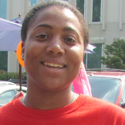 |
|
| Tiombe Booth |
|
The EHC mascot was conceived of and designed by Tiombe Booth,a staff specialist in the spine center.
Transition to tobacco-free campus
Emory's tobacco-free policy takes effect on January 1. To allow a transitional period during which smokers may use tobacco in specific locations for a limited amount of time as they begin to curtail tobacco use, there will be 14 temporary locations on the university and Emory Healthcare campuses on Clifton Road and one on the Briarcliff campus. The temporary zones will take effect Jan. 1 and be phased out next August. Read more about these temporary zones and see a map of their locations.
Notable
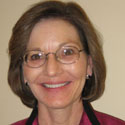 |
|
| Dianne Foster |
|
Dianne Foster is Emory Healthcare's new director of nursing operations. She comes from Wellstar Kennestone and has 32 years of business and health care experience.
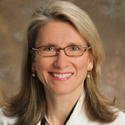 |
|
| Sheryl Gabram |
|
Sheryl Gabram is
the new surgeon-in-chief at Grady Hospital, replacing David Feliciano, who served in this role since 1994. Read more.
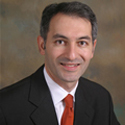 |
|
| Habib Samady |
|
Habib Samady became director of interventional cardiology this past summer, replacing long-serving director, John Douglas.
In Memory
Fray Marshall, professor and chair of urology, passed away on Friday, Dec. 2, from cancer at age 67. He was a proud husband, father, and grandfather.
His career in academic urology spanned 36 years—23 at Johns Hopkins and 13 at Emory, where he was the founding chair of urology as a department, leading its transition from a division in surgery to a department that today is noted for its faculty, residency program, and research. Throughout his career, he treated thousands of patients with kidney, prostate, bladder, and other urologic diseases.
He made numerous contributions toward making urologic surgery less invasive and more sparing of healthy tissue and function, and he helped Emory expand and strengthen its programs in prostate cancer, incontinence, and cryosurgery, while also developing first-rate programs in teaching and basic science research.
During his career, Marshall co-authored more than 300 scientific papers and 62 book chapters, edited seven books, and gave nearly 400 presentations. He served on many editorial boards, including the Journal of Urology, Urology, Uro-oncology and the International Journal of Urology.
Last March, the medical school established the Fray F. Marshall, MD Chair in Urology, which will be devoted to research and will help ensure his legacy of academic excellence and innovation. The generosity of financial contributors to this chair, including many former patients, is a testament to the lasting effect he had on his patients and friends and on urology and medicine in general.
A memorial service will be held at 2 p.m. on Saturday, December 10, at Glenn Memorial United Methodist Church on the Emory campus. In lieu of flowers, contributions may be made to the Marshall Make a Difference Fund, Community Foundation for Greater Atlanta, 50 Hurt Plaza, Suite 449, Atlanta, GA 30303. Read more about his life and his work at Emory.
Events
Dec 7: Celebrate Emory's 175th Anniversary at a university-wide convocation. 11 a.m., Glenn Memorial Church. More details about the event. More info about the anniversary. Read 175 things you should know about Emory in a special issue of Emory Magazine.
|

